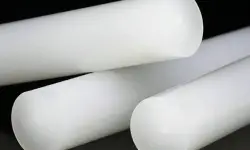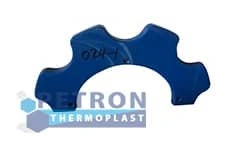
Machined Components
Petron Thermoplast is a leading plastic machining/machined components company in India and provides best machined components, capable of producing complicated technical plastic components using cutting-edge CNC technology. This enables us to produce pieces with a wide range of shapes, from simple to complex. CNC machining, cutting, routing, turning, drilling, and milling are just a few of the plastic machining services we offer. We also have a team of highly skilled engineers on staff, as well as CAD technology, which allows us to precisely engineer components to your specifications. We can produce single units or large batches utilizing a wide range of engineering plastic materials that we keep on hand. Existing samples or drawings can be used to generate quotes.
Plastic sheet materials, including engineering, fabrication, and specialty grades, are all available from us. Food-grade and metal-detectable plastics, as well as anti-static and self-lubricating grades, can all be machined. Industrial laminates, such as Tufnol and glass-based laminates, can also be machined.
Machined Parts
Pulley
Plastic Rod
Yellow Nylon Trunnion Wheel
PVC Assembled Component
Roller and Wheel Coating
Machined Aluminium Component
Chain and Belt
Chain
Black Nylon Trunnion Wheel
Roller Conveyor
Gear
What are Machined Components?
Machined components are precision-engineered parts that are manufactured through the process of material removal, commonly known as precision machining. These components are crafted from various materials such as metals, plastics, and composites, using advanced machinery like CNC (Computer Numerical Control) machines, lathes, mills, and routers. The machining process involves cutting, drilling, grinding, and shaping raw materials into the desired specifications, ensuring accuracy and tight tolerances.
Petron Thermoplast: The World's Best Machined Components Manufacturer
Petron Thermoplast is a leading high-quality machined components manufacturer tailored to meet the unique needs of various industries. When it comes to precision, quality, and innovation, Petron Thermoplast stands as the undisputed leader in the global market for machined components. Our team of experts is here to provide you with the best solutions tailored to your specific needs.

PVDF Material From Petron Thermoplast

Material From Another Buyer

Applications
Wear strips, scrolls, wear bends, bushes, rollers, scrapers, gears, presses, food-grade components, and OEM parts are just a few of the items available.
We need drawings or a sample to work with in order to machine your parts. If this is not possible, we will come to your site to gather the relevant information. Please get in touch with us to discuss your needs.
What exactly are machined parts?
There are machined pieces everywhere. All kinds of things, from microscopic metal fasteners to components for aviation engines, have been constructed utilizing the machining technique. But what precisely is machining, and what is a machined object?
When we refer to “machined parts,” we mean something more particular than “machine-made objects.” We are referring to components made using cutting tools like mills, lathes, and routers. Though they all operate differently, each machine’s basic function is to remove pieces of the workpiece, a block of the element, using a sharp cutting tool.
Even by that definition, there are numerous techniques to manufacture machined pieces. A machinist, a competent expert who operates machining equipment, can do the procedure manually by using a machine similar to a mill to shape the workpiece manually. Another option is to use digital technology, where a motorized CNC machine autonomously cuts the machined pieces following computer commands.
Most sophisticated or custom-machined items are now produced using CNC machines. However, some jobs still require manual machining since it might be quicker than developing a digital design and programming the digital equipment.
What are the advantages of machined parts?
There are certain advantages of machined parts. They are:
- One of their main benefits is that there is no minimum order quantity for machined parts.
- Because they may be produced as one-offs, machined parts are ideal and reasonably priced as prototypes. Additionally, because machining is quicker than moulding, R&D teams may quickly create several iterations of a part, put it through any necessary testing, and then go on to production.
- Shapes and sizes for machined items might vary greatly. This is because CNC machining is not restricted by strict moulding design limitations like thin walls and tapering; machined objects can be thick and sturdy, yet their features can also be great and detailed.
- High standards can be achieved while manufacturing machined parts. The ability for consumers to define tolerances that the machinist must meet is maybe even more significant. As a result, the machinist or machine operator can spend more time perfecting intricate features and pieces with tight tolerances.
Applications
Wear strips, scrolls, wear bends, bushes, rollers, scrapers, gears, presses, food-grade components, and OEM parts are just a few of the items available.
We need drawings or a sample to work with in order to machine your parts. If this is not possible, we will come to your site to gather the relevant information. Please get in touch with us to discuss your needs.
What exactly are machined parts?
There are machined pieces everywhere. All kinds of things, from microscopic metal fasteners to components for aviation engines, have been constructed utilizing the machining technique. But what precisely is machining, and what is a machined object?
When we refer to “machined parts,” we mean something more particular than “machine-made objects.” We are referring to components made using cutting tools like mills, lathes, and routers. Though they all operate differently, each machine’s basic function is to remove pieces of the workpiece, a block of the element, using a sharp cutting tool.
Even by that definition, there are numerous techniques to manufacture machined pieces. A machinist, a competent expert who operates machining equipment, can do the procedure manually by using a machine similar to a mill to shape the workpiece manually. Another option is to use digital technology, where a motorized CNC machine autonomously cuts the machined pieces following computer commands.
Most sophisticated or custom-machined items are now produced using CNC machines. However, some jobs still require manual machining since it might be quicker than developing a digital design and programming the digital equipment.
What are the advantages of machined parts?
There are certain advantages of machined parts. They are:
- One of their main benefits is that there is no minimum order quantity for machined parts.
- Because they may be produced as one-offs, machined parts are ideal and reasonably priced as prototypes. Additionally, because machining is quicker than moulding, R&D teams may quickly create several iterations of a part, put it through any necessary testing, and then go on to production.
- Shapes and sizes for machined items might vary greatly. This is because CNC machining is not restricted by strict moulding design limitations like thin walls and tapering; machined objects can be thick and sturdy, yet their features can also be great and detailed.
- High standards can be achieved while manufacturing machined parts. The ability for consumers to define tolerances that the machinist must meet is maybe even more significant. As a result, the machinist or machine operator can spend more time perfecting intricate features and pieces with tight tolerances.
How to Design Machined Components?
It is usually advisable to utilize design for manufacturing (DfM) principles, which call for designing parts with the intended manufacturing process. It is necessary to design parts for machining differently from, say, those for 3D printing.
As long as basic guidelines are followed, designing machined components is fortunately not particularly challenging. Below is a list of these regulations.
- Undercuts are striations in the workpiece that can’t be made using conventional cutting instruments. They demand specialized cutting tools, such as T-shaped ones, and unique design considerations.
- Machined parts cannot tolerate exceptionally thin walls, in contrast to moulded parts, which distort if the wall thickness is too great. If thin walls are necessary for the design, the designers should either avoid them or employ an injection moulding procedure.
- It’s crucial to remember that holes and cavities depend on the cutting tools when designing machined items. A part can have cavities and pockets machined into it to a depth four times the cavity’s breadth. Because of the necessary cutting tool diameter, deeper cavities will invariably have fillets—rounded edges as opposed to pointed ones.
Availability
Shop Machined Components –
Sizes / Profiles: Manufactured to order.
What Makes Petron Thermoplast the Best?
Global Leadership in Precision Engineering:
We leverage the latest advancements in machined components manufacturing technology to deliver components with superior accuracy and consistency.
Expertise in High-Performance Materials:
Our deep material expertise allows us to create components that not only meet but exceed the most demanding industry standards.
Customization at Its Finest
At Petron Thermoplast, we believe that one size does not fit all. We work closely with our clients to design and manufacture custom components that are perfectly tailored to their unique applications, ensuring optimal performance and reliability.
Unrivaled Quality Assurance
Quality is our hallmark. Every component undergoes stringent quality checks to ensure it meets our exacting standards. Our commitment to quality has earned us the trust of leading companies across diverse industries.
Global Reach with Local Support
While we operate on a global scale, we maintain a customer-centric approach, providing personalized support and timely delivery, no matter where you are in the world.
What are the applications of machined plastic parts?
Machined plastic parts are widely used across various industries due to their versatility, precision, and performance in challenging environments. Here are some key applications of machined plastic parts:
1. Automotive Industry
Machined plastic parts are used in vehicle interiors, fuel systems, electrical systems, and under-the-hood components. Their lightweight properties improve fuel efficiency, while their resistance to chemicals and heat ensures durability.
2. Aerospace
In the aerospace industry, machined plastic parts are valued for their strength-to-weight ratio. They are used in components such as bushings, bearings, and insulation, reducing the overall weight of aircraft while maintaining high performance under extreme conditions.
3. Medical Devices
Medical and surgical devices often rely on machined plastic parts for their biocompatibility, chemical resistance, and ability to withstand sterilization processes. They are found in equipment like implants, diagnostic instruments, prosthetics, and surgical tools.
4. Industrial Equipment
Machined plastic parts are frequently utilized in pumps, valves, seals, and flow meters due to their resistance to corrosion, chemicals, and wear. They also contribute to noise reduction and friction control in machinery.
5. Food and Beverage Processing
Plastic parts are used in food processing and packaging equipment due to their compliance with FDA and other regulatory standards. These components are resistant to moisture, easy to clean, and able to handle varying temperatures, ensuring hygiene and safety in food production.
6. Consumer Products
In consumer goods, machined plastic parts are used in everyday items such as home appliances, sporting goods, and personal care products. Their versatility allows for a wide range of applications where durability, aesthetic appeal, and cost-efficiency are key.
How to Design Machined Components?
Designing machined components requires a careful balance of functionality, manufacturability, and material selection. Here’s a step-by-step guide on how to design effective and efficient machined components:
1. Select the Appropriate Material
- Material Properties: Choose a material that meets the mechanical, thermal, and chemical properties required for the application. Common materials include metals (steel, aluminum, titanium) and high-performance plastics (e.g., PEEK, nylon, PTFE).
- Machinability: Consider the material’s ease of machining. Some materials, like aluminum and brass, are easier to machine, while harder materials like titanium or stainless steel may require specialized tooling and longer machining times.
2. Create a CAD Model
- 3D Modeling: Use CAD (Computer-Aided Design) software to create a detailed 3D model of the component. This helps visualize the component’s geometry and allows for better communication with machinists and manufacturers.
- Geometry Considerations: Ensure the design geometry is suitable for machining. Avoid overly complex shapes that may be difficult or expensive to machine. Ensure that internal corners have fillets (rounded edges) rather than sharp angles, as sharp internal corners are challenging to machine.
3. Optimize for Manufacturability
- Simplicity: Simplify the design where possible to reduce machining time and cost. For instance, using standard sizes for holes, threads, and other features can lower production costs.
- Tool Access: Ensure the design allows for easy access by cutting tools. Avoid deep cavities or undercuts that may require specialized tools or multiple setups, which increase production time and cost.
- Tolerance Considerations: Specify tolerances carefully. Tight tolerances increase machining time and cost, so only apply strict tolerances where necessary, such as in mating surfaces or critical alignments.
4. Consider Surface Finishes
- Functionality: Specify the surface finish based on the part’s function. For example, parts that need to reduce friction may require smooth finishes, while aesthetic parts may need specific cosmetic finishes.
- Machining Impact: The required surface finish affects the machining process. Finer finishes usually mean longer machining times or the use of secondary operations such as grinding, polishing, or coating.
5. Prototype and Test
- Rapid Prototyping: Create a prototype of the part using CNC machining or 3D printing to validate the design. This allows you to physically inspect the part for functionality, fit, and performance.
- Functional Testing: Test the machined component in real-world conditions to verify its performance. Make necessary adjustments to the design based on testing results.
Which Material We Used in Machined Components?
The material chosen depends on the application, operating environment, and required properties. Here’s a breakdown of common materials used in machined components:
Metals
Metals are the most commonly used materials for machined components due to their strength, hardness, and durability. They can be machined into precise and complex shapes.
Plastics
Machined plastics are often used in applications that require lightweight, corrosion resistance, and specific chemical or thermal properties.
Ultra High Performance Plastic
- PEEK (Polyether Ether Ketone)
- PFSA (Perfluorosulfonic Acid)
- PI (Polyimide)
- TPI (Thermoplastic Polyimide)
- PAI (Polyamide-Imide)
- HTS (High-Throughput Screening)
High Performance Plastic
- PPSU (Polyphenylsulfone)
- PEI (Polyetherimide)
- PESU (Polyethersulfone)
- PSU (Polysulfone)
- PARA (Polyarylamide)
- PPS (Polyphenylene Sulfide)
- PPA (Polyphthalamide)
- LCP (Liquid Crystal Polymer)
- HPN (Hyperform Polypropylene)
- PTFE (Teflon)
Technical Plastics
- PC (Polycarbonate)
- ABS (Acrylonitrile Butadiene Styrene)
- MABS (Methacrylate Acrylonitrile Butadiene Styrene)
- ASA (Acrylonitrile Styrene Acrylate)
- PMMA (Polymethyl Methacrylate)
- PVC (Polyvinyl Chloride)
- PBT (Polybutylene Terephthalate)
- PET (Polyethylene Terephthalate)
- POM (Polyoxymethylene)
- PA 6 (Polyamide)
- PA 6.6/PPE (Polyamide/ Polyphenylene Ether)
- PA 12 (Polyamide)
- TPE (Thermoplastic Elastomer)
- TPU (Thermoplastic Polyurethane)
Standard Plastics
- PS (Polystyrene)
- PVC (Polyvinyl Chloride)
- PP (Polypropylene)
- HDPE (High Density Polyethylene)
- LDPE (Low Density Polyethylene)
- Nylon (C6H11NO)n
- Delrin (Acetal)
- UHMW (Ultra-High-Molecular-Weight Polyethylene)
Composites
Composites combine two or more materials to achieve properties that individual materials cannot offer alone. They are ideal for applications requiring high strength, lightweight, and resistance to harsh environments.
Ceramics
Machined ceramics are used in high-temperature applications or where electrical insulation is critical.
Superalloys
Superalloys are used in extreme environments requiring resistance to heat, corrosion, and wear, often in aerospace and power generation.
By choosing the right material, the functionality, durability, and efficiency of machined components can be optimized for any specific application.
Conclusion
At Petron Thermoplast, we take pride in offering precision-engineered machined components that meet the highest industry standards. Our extensive experience, advanced machining capabilities, and commitment to quality ensure that every component we produce is built for durability, accuracy, and optimal performance. Whether you’re in the automotive, aerospace, medical, or industrial sector, our expertise in machining a wide variety of materials—including metals, high-performance plastics like PEEK, and composites—allows us to deliver tailored solutions for your most complex challenges. Partner with Petron Thermoplast to achieve exceptional results in all your machined component needs, ensuring reliability and excellence across all applications.
Machined Components
Examples of our Plastic Machining

PE1000 (UHMW) Ring
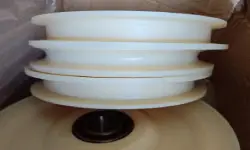
Food Quality Acetal Cheese Pusher
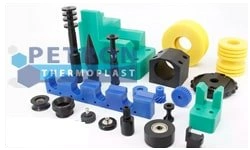
Plastic Component

Blue Acetal Meura Spray Head

PE1000 (UHMW) Scraper
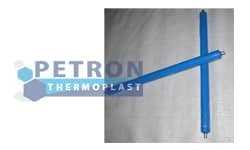
Metal Detectable Roller
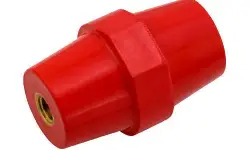
Dough Moulding Drum

Metal Detectable Wheel

Nylon Mount

Machined Scraper
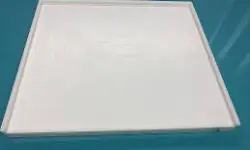
Acetal Wear Plate

Nylon Wheel

Pipework

Polyethylene Flange

Tufnol Scrapers

Plastic Chute

Plastic Component
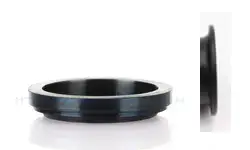
Tapered Dovetail Gasket

Machined Aluminium Component
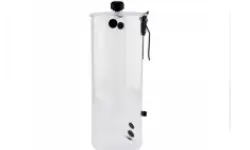
Acrylic Hopper Tube

Machined Aluminium Connector
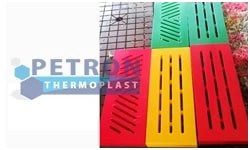
UHMW Component
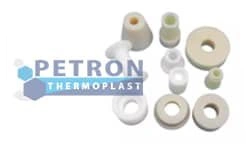
Nylon 6 Component

Plastic Components

Black UHMW Wheel
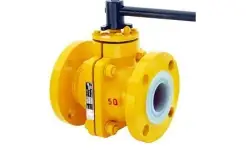
PTFE Ball Valve Liner

Acetal Clamping Nut
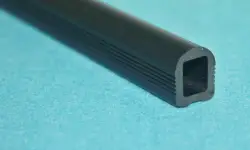
PVC Unassembled Components
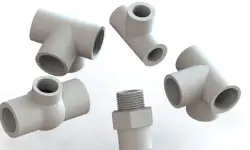
PVC Assembled Component

Glass Filled PEEK Component
Related Products
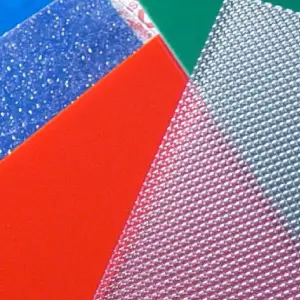
Plastic Fabrication
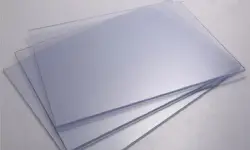
Plastic Sheet
